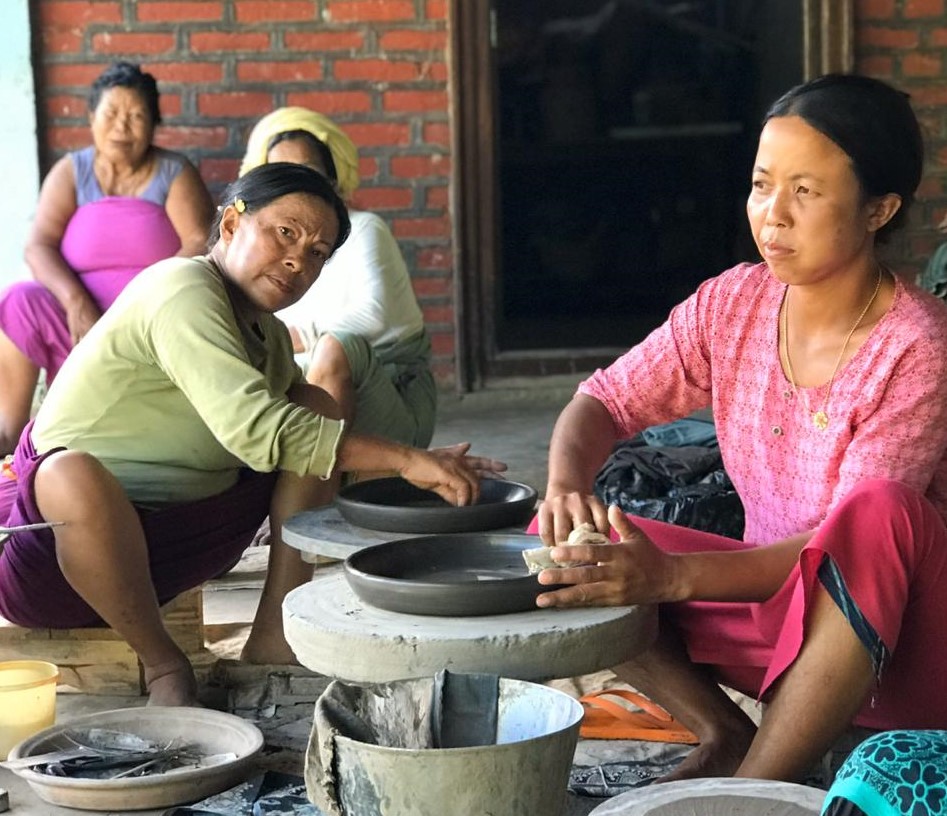Namaste!
During the past months I traveled to many different “corners of India”. It fascinates me to see how India’s landscapes and people can differ from the ones at a distance of a mere 100 kilometers. A different language or dialect is spoken, and sometimes even Indians cannot understand each other. The women wear their sarees and jewelry in a different way, other colors are being used and the smell of the food displays other ingredients. Spicy, not so spicy, sometimes just a little sweeter or a more abundant use of coconut. If you order a thali in a restaurant, – a large tray with small containers with various dishes that are getting refilled without asking as if you were in an ‘all you can eat’ contest – you will certainly get the local gems served. Even the national drink – masala chai – comes in a huge variety of spices making it a surprise each time you order one.
Wide variety of landscapes
The landscape is also constantly changing. Around Pune, where we live, it is mountain-like with huge trees in lush greens, especially now, shortly after the annual monsoon has officially left the country. But there are also parts of India that are desert-like or with mountains so high that there are no trees at all. Or where a specific fruit or vegetable grows. The area where we live is known for its mango’s, or ‘fruit of the gods’ and in the North East the pineapple is abundantly present.
All women’s market in Imphal
The North East is a very special area anyway. I recently went to the capital of Manipur, Imphal, to meet black pottery producers. In Imphal there is a women’s market, where only women are allowed to sell their mostly handmade products and food. A very special and pleasant atmosphere, where so many beautiful crafts are being offered. Due to its geography, this part of India has had its share of tough times. Many men did not come home after past and more recent wars, and women had to take over the responsibility to provide for their families and communities.
Power of Manipur’s village women
In Manipur, you can see the immense resilience and strength of rural women. I witnessed that the trade spirit is great, they are very creative and know how to survive very well when I visited villages where the black pottery is being made by women. Interestingly, the clay of the real black pottery comes from only two places in the world. In Colombia and yes, in Manipur. The clay has such a pure black color, perfect for making beautiful pottery and tableware. The process is very intensive. First, the shape of the product is being made. After seeing that I thought: “Oh, that’s not so time-consuming.” But after one day of drying, every product is polished, and polished, and polished, until it looks super smooth, has no small bumps or stones and the shape is perfect. Then the products must dry for another day in the sun, after which they go into the ‘oven’. This ‘oven’ is just a large pile of hay, on which the products are placed very meticulously, then covered with more hay and set on fire. This is also a very precise process, because too short in the fire does not give the right result, but certainly too long neither. It must be constantly monitored for the best results. I greatly admire this black pottery work of the women in the villages. The precision with which they work is astonishing: when a cooking pot is made, the lid will fit exactly, but I never saw any of the women use a measuring tape. It is thanks to the eyes of many women masters!
To be continued, every day in India brings a new adventure!
Marie-Gon
Marie-Gon is a Dutch volunteer expert at Women on Wings. Since end of 2016 she lives in Pune, India. She regularly works with Women on Wings’ business partners on product development. About these and other visits, Marie-Gon writes blogs for the Women on Wings community


